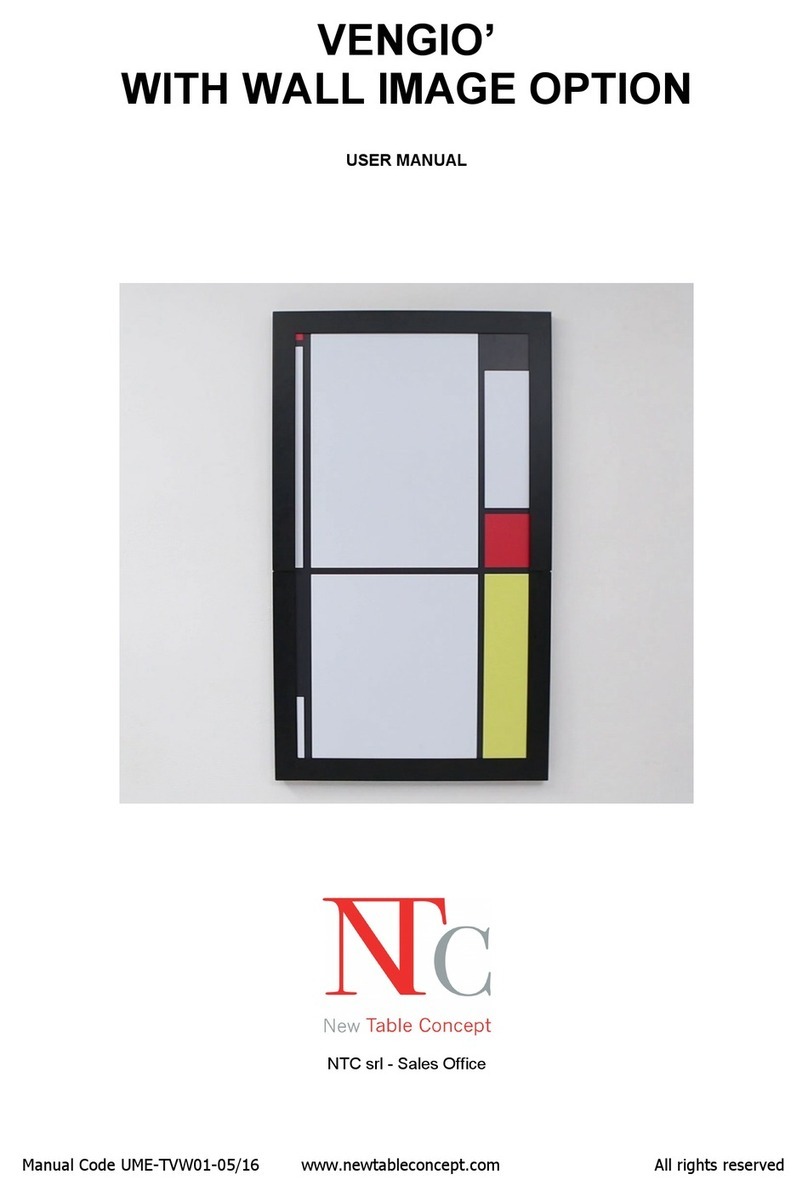
UME-TSG02-07/21 www.newtableconcept.com
Page 8
Fig. 14 Fig 15
14. Move the structure toward to the rails slightly oblique so that it is closer to one of the two rails.
Starting from the nearest rail, adjust the positioning of the slides so that the screws enter the slots of
the sliding carriage plates pushing the structure further (Fig 15).
15. Insert the washer and screw partially the self-locking nuts to the sliders screws. Repeat the same
operations in the other slider. The self-locking nuts we supply are modified and have a reduced
braking torque. Do not use common self-locking nuts as they may unscrew the sliders screws
when tightening them.
16. Tighten slightly the top nut of the right guide and do not tight the other three (leave one/two
millimeters margin) to allow the screws to move inside the plate slots during the opening and closing
of the table.
17. Fit the two closing lock magnets to the lower ends of the guides. Remove the black rubber cap from
the magnet and loosen the screw just enough to fit the black holder into the guide. Keeping the
holder at the end of the guide, lock it in that position by tightening the screw. Replace the black
rubber cap over the magnet (Fig. 16).
Fig. 16
18. Remove the gray plastic cylinder previously located around the piston shaft.
19. Close the structure lifting it from the wall side or pushing it down from the opposite side and check
that it closes well with the magnets that lock it in that position. Open the structure by pulling it from
the wall and check that it slides properly. The structure may not open completely due to the lack of
weight. Open it fully by pushing on the sliding carriage.
20. If the structure does not slide properly, you can get better results by loosening or tightening the
slider nuts or by improving the parallelism of the two rails.
21. Activate the locking mechanism by removing the rubber band that holds the locking hook (Fig. 17).




























